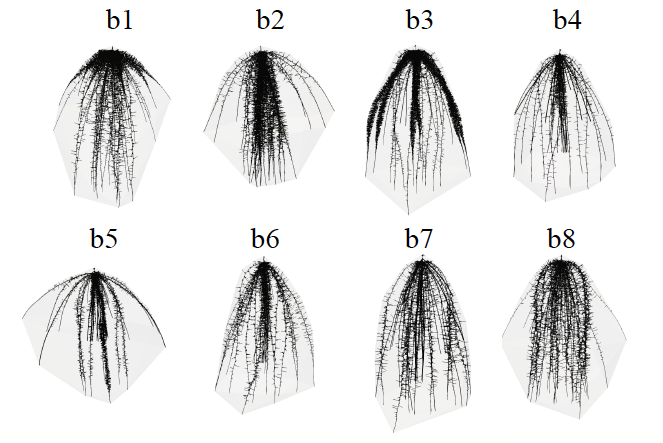Metrics of phenes are more reliable, stable, and robust descriptions of root architecture than are estimates of phene aggregates.

Root architectural models
Authors
Rangarajan H, JP Lynch
Source
Plant Phenomics Volume 2021 |Article ID 6953197 | https://doi.org/10.34133/2021/6953197
BioRxiv: https://www.biorxiv.org/content/10.1101/2020.12.01.406827v1
Abstract
High throughput phenotyping is important to bridge the gap between genotype and phenotype. The methods used to describe the phenotype therefore should be robust to measurement errors, relatively stable over time, and most importantly, provide a reliable estimate of elementary phenotypic components. In this study, we use functional-structural modeling to evaluate quantitative phenotypic metrics used to describe root architecture to determine how they fit these criteria. Our results show that phenes such as root number, root diameter, lateral root branching density are stable, reliable measures and are not affected by imaging method or plane. Metrics aggregating multiple phenes such as total length, total volume, convexhull volume, bushiness index etc. estimate different subsets of the constituent phenes, they however do not provide any information regarding the underlying phene states. Estimates of phene aggregates are not unique representations of underlying constituent phenes: multiple phenotypes having phenes in different states could have similar aggregate metrics. Root growth angle is an important phene which is susceptible to measurement errors when 2D projection methods are used. Metrics that aggregate phenes which are complex functions of root growth angle and other phenes are also subject to measurement errors when 2D projection methods are used. These results support the hypothesis that estimates of phenes are more useful than metrics aggregating multiple phenes for phenotyping root architecture. We propose that these concepts are broadly applicable in phenotyping and phenomics.>

